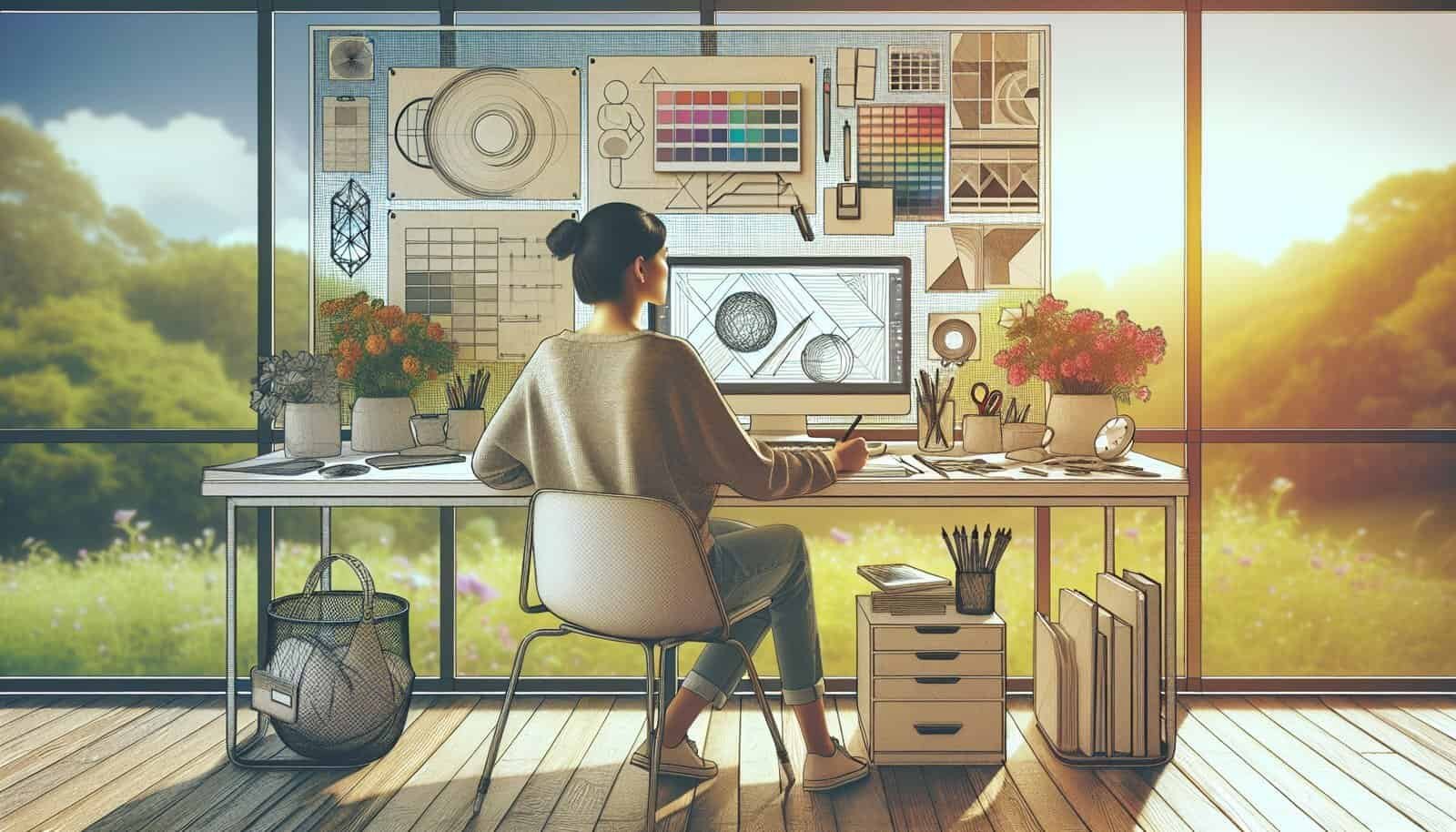Have you ever wondered what life is like for a freelance UX/UI designer? The world of freelance work can be both liberating and daunting, but it carries its own unique rhythm and rewards. Embarking on a journey where creativity, technical skills, and flexibility mesh seamlessly, a freelance UX/UI designer crafts digital experiences for users while enjoying the freedom to shape their own careers. Let’s uncover the nuances, opportunities, and everyday experiences that mark the life of a freelance UX/UI designer.
Understanding the Role of a Freelance UX/UI Designer
Before diving deeper, grasping the core responsibilities of a freelance UX/UI designer is essential. As a blend of user experience (UX) and user interface (UI) specialties, this role involves designing seamless and engaging digital interfaces.
What is UX Design?
User Experience (UX) design focuses on how users interact with a product. It considers the entire process, from acquiring the product to using it efficiently and effectively. You, as a UX designer, ensure the product answers the users’ needs while being both accessible and enjoyable.
What is UI Design?
User Interface (UI) design is the craft of designing interactive interfaces in software. It involves the look and feel, the presentation, and the interactivity of a product. As a UI designer, your job is to create visually appealing and intuitive interfaces, aiming to enhance user interaction.
Blending UX and UI
When combined, UX and UI design ensure a product not only meets user expectations functionally but also appeals aesthetically. As a freelancer in this field, you’re expected to fluently transition between understanding user needs and crafting beautiful interfaces that suit them.
The Path to Becoming a Freelance UX/UI Designer
Education and Skills
While some folks in this profession may have a formal educational background in fields like graphic design or computer science, others might be self-taught. The most crucial aspect is developing a strong portfolio that showcases your understanding of both UX and UI principles.
Essential Skills
Your toolkit should include skills like wireframing, prototyping, user research, and interaction design. Additionally, you need to be proficient in design tools such as Sketch, Figma, or Adobe XD. Don’t forget soft skills! Good communication and time management are non-negotiable in freelancing.
Building a Portfolio
Your portfolio isn’t just a collection of work—it’s the representation of your style and capability. Display case studies that demonstrate your design process from problem to solution, using real-world examples that highlight your approach and impact.
Seeking Opportunities
Networking plays a significant role in sourcing freelance gigs. It’s beneficial if you engage in online communities, attend industry meetups, and leverage platforms like LinkedIn or Behance. Remember, each interaction paves the path to potential opportunities.

Working as a Freelance UX/UI Designer
Setting the Scene: Workspace and Tools
Creating a comfortable workspace that sparks creativity is pivotal. This could mean having a dedicated home office or finding solace in a local coffee shop. Besides physical space, invest in the right tools—top-notch software, a reliable computer, and perhaps a comfortable chair.
Structuring Your Day
Freelance life means no traditional 9-to-5, offering flexibility in how you schedule your day. Plan your hours wisely, allowing for deep-focus time where you’re most productive, whether that’s early in the morning or late at night.
The Art of Client Communication
Successfully conveying your vision to clients is crucial. Regularly update them with progress reports, listen to their feedback, and adjust accordingly. By establishing trust and maintaining transparency, you’ll ensure smooth collaborations and long-term relationships.
Challenges Freelance UX/UI Designers Face
Unpredictable Income
Unlike a salaried position, freelance work can result in inconsistent income streams. While this is part of the allure for some, it requires careful financial management. Create a budget plan that accommodates fluctuations and saves for leaner periods.
Table: Managing Financial Fluctuations
| Financial Tip | Description |
|---|---|
| Create an Emergency Fund | Save a portion of earnings for unexpected expenses. |
| Regular Review | Regularly assess your financial standing and adjust as needed. |
| Diversify Income | Manage multiple clients to reduce dependency on a single source. |
Balancing Multiple Projects
Juggling multiple deadlines and projects can be overwhelming. Prioritize your tasks based on deadlines and complexity, and don’t hesitate to decline additional work if your schedule can’t accommodate it effectively.

The Joys of Freelance UX/UI Designing
Autonomy and Flexibility
Perhaps one of the most significant rewards is the ability to choose projects that genuinely excite you. You’re not just a cog in a machine; you’re actively steering your career path, directly aligning work with personal and professional goals.
Pursuing Passion Projects
While client work is essential, freelancing provides the freedom to engage in passion projects. These are opportunities for you to explore innovative ideas and potentially discover new creative directions.
Continuous Learning and Growth
The tech industry evolves rapidly, and to remain relevant, continuous learning is vital. As a freelance UX/UI designer, you have the chance to constantly update your skills and adapt to emerging trends, whether through online courses or self-guided study.
Building a Thriving Freelance Career
Networking and Community Engagement
A strong community can provide support, inspiration, and opportunities. Be active on forums, contribute to discussions, and give back by sharing your insights and knowledge with others.
Pursuing Professional Development
Consider attending workshops, webinars, and conferences. These events are excellent for learning new skills and staying updated with industry trends while expanding your professional network.
Reflecting on Success and Setting Goals
Periodically take time to reflect on your achievements and areas for improvement. Set tangible goals that push you forward and keep tracking your progress. By doing so, you’re nurturing growth and ensuring your career remains on the path you desire.

Future Prospects in Freelance UX/UI Design
Embracing Emerging Technologies
As technology advances, UX/UI designers need to adapt to innovations like virtual reality (VR), augmented reality (AR), and artificial intelligence (AI). Understanding and integrating these technologies into your skillset amplifies your value in the market.
Sustainability and Ethical Design
With the growing awareness of sustainability, ethical design is becoming imperative. Whether it’s designing eco-friendly digital solutions or prioritizing inclusive design, these considerations are increasingly expected from professional designers.
In Conclusion
As a freelance UX/UI designer, each day is an opportunity to explore new ideas and craft engaging user experiences, balancing creativity with technical expertise. While the journey may have its challenges, the rewards—autonomy, flexible schedules, and the chance to pursue your passions—can be immensely gratifying. Through continuous learning, community engagement, and strategic planning, you can build a fulfilling and successful freelance career.
If you’re standing on the cusp, considering whether this path is for you, remember that the essence of freelancing lies not just in creating stunning designs, but in shaping a career that reflects your individuality and aspirations. Will you take the leap?

